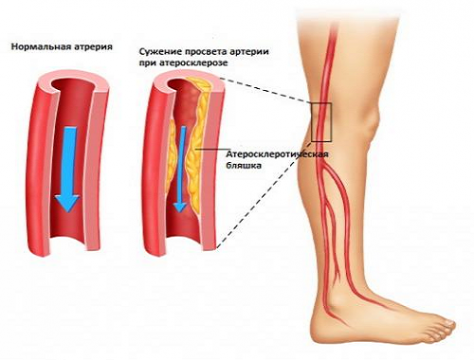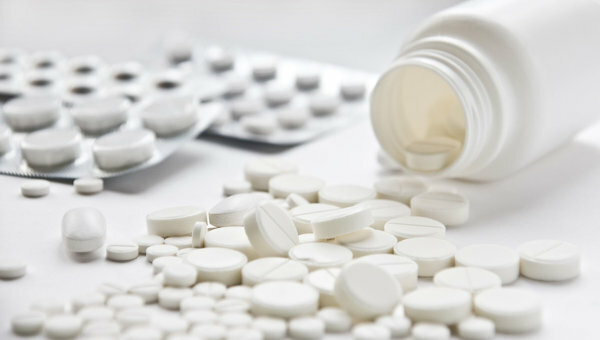Angiopathy is a disease associated with the damage to the walls of blood vessels, otherwise in medical circles called the companion of diabetes.
But not only it causes such violations. The cause may be a violation of blood pressure or the consequences of injuries. All gauges of vessels from large to capillaries are subject to influence. Most often the disease manifests itself in the lower limbs and requires compulsory treatment.
In the case when angiopathy affects the lower extremities, the disturbances occur precisely in the capillary system and are diagnosed as microangiopathy. With the further course of the disease and gradual regression, large vessels are also affected, which significantly worsens the patient's condition. A similar condition already has a different name - macroangiopathy.
The causes of angiopathy of the lower extremities

The root cause of the disease is considered to be disruptions in the endocrine system, increasing the risk of angiopathy of the lower extremities at times.
The trigger mechanism in this case is atherosclerotic changes. Slowing blood flow leads to a decrease in the conductivity of nutrients to the tissues, and as a result, the death of entire areas of the cover of the foot. The critical moment of the course of the disease is a decrease in immunity and an increase in the impact of infectious agents.Practice shows that patients seek help from specialists already at the time of the active course of the disease, that is, when the pain is felt even in an immobilized state. This indicates an extensive lesion site, which occurs in stage III angiopathy and requires immediate medical intervention.
Diabetic angiopathy
For patients with a diagnosis of diabetes mellitus, angiopathy can cause complications associated with disruption of body systems. To a greater extent, the disease affects: the
- urinary system;
- organs of vision;
- blood supply system;
- upper, and especially lower limbs.
All the vessels are affected with the course of the disease, the basement membranes are compacted, which leads to the formation of deposits and, as a consequence, to a decrease in the capacity. In patients with diabetes mellitus, such complications are caused by the so-called "diabetic foot" symptom. The process of blood supply is broken, starting with the toes, and then spreads all over the foot. In severe cases, the disease covers the ankle and then to the thigh.
Symptoms of
The most obvious signs of the onset of angiopathy of the lower limbs are:
- changes in vessel walls and the appearance of seals;
- decreased blood coagulation;
- blood flow disorder.
The combination of these factors contributes to the formation of microthrombi in the vascular system of the lower extremities. As a rule, this type of thrombus does not react to antithrombotic medications.
Angiopathy of the lower limbs so often accompanies the course of diabetes that it is often attributed to one of the signs of the disease.
Symptoms of

Symptoms of angiopathy of the lower limbs are completely dependent on the stage of the course of the disease, the age of the patient and the current state of his health.
There are four stages of the disease:
- I st.- Absence of obvious symptoms, with the exception of atherosclerotic changes, which can only be determined by a comprehensive examination.
- II Art.- stage of partial lameness. It manifests itself with prolonged walking pain and muscle spasms.
- III st.- the pain syndrome manifests itself in the patient's resting state. With the change in the position of the limb, the pain decreases or disappears completely.
- IV Art.- stage of severe course of the disease, clear ulcers and open areas of tissue necrosis become obvious symptoms.
The main symptoms of lower limb angiopathy:
- periodic occurrence of numbness and tingling in the feet;
- pain in walking, periodic lameness, fast-appearing fatigue in the limbs;
- nasal bleeding, visible hemorrhage on the skin;
- skin disorders, manifested by necrotic and gangrenous areas;
- rapid deterioration in the level of vision, up to complete loss;
- swelling of the lower extremities with a manifestation of a gray-blue hue, cold feet.
Some of the listed signs of angiopathy belong to a wide range of diseases, so the final diagnosis can only be made by a specialized doctor. Also, the signs depend on the stage of development, that is, the microangiopathy or macroangiopathy at the moment in the patient.
Treatment of angiopathy

Methods for treating angiopathic lower extremities depend on the cause of the lesion of the vessel walls.
The main effect of drugs prescribed for diabetic angiopathy is directed to:
- lowering blood sugar levels;
- blood pressure regulation;
- improvement of vascular tone;
In addition, patients with diabetes are recommended to completely change the principles of nutrition, which to a large extent allows you to slow the process of damage to the vascular system.
Treatment of angiopathy of the lower extremities is a long process, requiring the application of modern methods. Chance is even in patients who are at a late stage of the disease.
Types of angiopathy treatment
There are several types of angiopathy treatment:
- Lymphodomation is the newest technique designed to improve the circulation of blood and lymph flow systems. The procedure helps to reduce swelling of tissues, accelerate the removal of residual metabolic products. Positive dynamics after the procedure is manifested in the resumption of transportation of nutrients.
- Surgical intervention, is the reconstruction of the lumen of blood vessels. In addition, during the operation, soft tissue is made.
- Conservative treatment based on prescribing by the attending physician of medicinal preparations, which are responsible for: regulation of arterial pressure;acceleration of microcirculation( trental);improvement of vascular permeability properties( anginin, dialipon);blood thinning( quarantil);restoration of tissue trophism( quintasol);
- Physiotherapy: mud therapy, electrostimulation or plasma plasmapheresis.
In case of severe course of the disease, if the patient shows obvious signs of gangrenous lesions of tissues with severe intoxication of the body, amputation of affected extremities or individual elements occurs. Later prostheses are put.
Timely detection of signs of macroangiopathy and microangiopathy of the lower limbs, allows us to apply timely methods of treatment, thereby avoiding the critical consequences of the course of diabetic disease.



